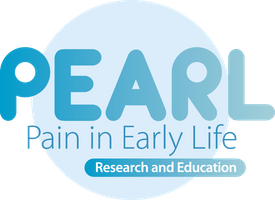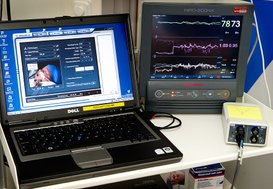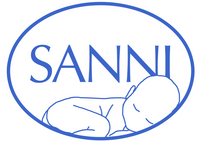Collaborative projects run by the PEARL Research Group
Below you will find a list of projects including two or more PEARL-members. They can stem from different project-owners or other research-groups, but by presenting them here we will show the extensive pain-research y our members.
Translation, cultural adaptation and validation of the revised version of the Premature Infant Pain Profile
Premature infants are born into this world weeks and often months early and are especially vulnerable to pain. Intensive treatment is often necessary for survival and includes many painful interventions and procedures. In order to effectively treat pain in the neonatal period and diminish the negative effects of pain, pain must be recognized.
The Premature Infant Pain Profile (PIPP) is one of the most extensively validated measures for assessment of procedural pain in premature infants. A revised version, PIPP-R, was recently published and is reported to be more user-friendly than the original version.
The aims of this study are to:
a) Translate the PIPP-R scale into Finnish, Icelandic, Norwegian and Swedish.
b) Test the content validity of each of the translated versions of the measure using Cognitive Interviews.
Reserachers from PEARL: Randi Dovland Andersen, Sigríður María Atladóttir, Anna Axelin, Mats Eriksson, Guðrún Kristjánsdóttir, Emma Olsson, Bente Vederhus
Use of comfort measures and sweet solutions for pain management in neonates – Nordic data from the EuroPAIN Survey
EUROpean-Pain-Audit-In-Neonates (EUROPAIN) was a prospective observational study of routine clinical practices related to sedation/analgesia for newborn infants in neonatal intensive care units across Europe. For Finland, Norway and Sweden data we also collected data on comfort measures / non-pharmacological treatment.
Researchers from PEARL: Randi Dovland Andersen, Mats Eriksson, Tarja Pölkki
Pain in infancy and life-long control of the stress response
This study will investigate if pain near to the time of birth results in impaired ability to cope with stress that persists into adolescence among ostensibly healthy children.
Researchers from PEARL: Mats Eriksson, Scott Montgomery
Neurophysiological measures of neonatal pain - a comparative study
In order to provide newborn infants with correct pain alleviation there is a need for reliable and easy-to-use tools to assess the pain. We are comparing Galvanic Skin Response (GSR) and Near Infrared Spectroscopy (NIRS) with Premature Infant Pain Profile-Revised (PIPP-R). The research group has experience with all the methods separately, but they have never been compared to each other before.
Researchers from PEARL: Randi Dovland-Andersen. Mats Eriksson, Maria Gradin, Emma Olsson
Sweet solution to minimize pain and stress during routine medical examination of newborn infants
Every year over 100 000 newborn Swedish infants undergo a routienely performed medical examination, including a painful check of the stability of his hip joints. The pain-reaction is stressful for them and their parents and makes the examination more difficult. This study will examine if a small amount of sweet solution given in the mouth will minimize the pain-reaction and facilitates the examination. It would be beneficial both in terms of less pain and discomfort and in terms of smoother and more efficient medical examinations.
Researchers from PEARL: Mats Eriksson, Emma Olsson
Pain assessment instruments for use in clinical studies on newborn infants – a mapping of the evidence
There are different expectations on instruments for clinical use, where easiness to use and clinical utility are most important features, and on instruments to be used in research where the researcher must be ascertained that the results are valid and reproducible. In a research situation, there is often room for various equipment to measure physiological and/or neurophysiological variables and time to go back and look at captured data again. In a clinical research situation, however, the pain assessment scales are likely to be the same ones that are used by clinical staff (nurses, physicians) in the bedside situation, to be captured in real-time and documented for later analysis and comparison with other factors in the study.
It is essential that the pain assessment used in clinical studies are valid and reliable for that particular situation, in order for the results of the study to be trustworthy.
The objective of the study, which is part of the SANNI-project, is to find and critical appraise psychometric properties for and utility of pain assessment instruments that have been used in clinical studies on preterm and full term infants.
Researchers from PEARL: Hanna Ahl, Mats Eriksson and Emma Olsson
Translation, implementation and validation of the Comfort Neo Pain Scale
The Comfort Neo pain Scale is a 6 item behaviour scale for measurement of prolonged pain and distress in neonates. The instrument is developed by Monique van Dijk, and is previously translated into Danish. The Comfort Neo Pain Scale is currently implemented in all Danish NICU`s.
Achievements:
Translation and cultural adaption of The Comfort Neo Pain Scale into Norwegian using Wild’s 10 steps
Development of a specific evidence based algorithm.
Implementation of The Comfort Neo Pain Scale (Norwegian version) and its algorithm in a family centered care unit (Drammen, Norway).
Our aim is the following:
Include parents in pain assessment of their newborn
Validate the Norwegian version of The Comfort Neo Pain Scale in prolonged and acute pain
Researchers from PEARL: Flore Le Marechal, Lene Tandle Lyngstad and Solfrid Steinnes



